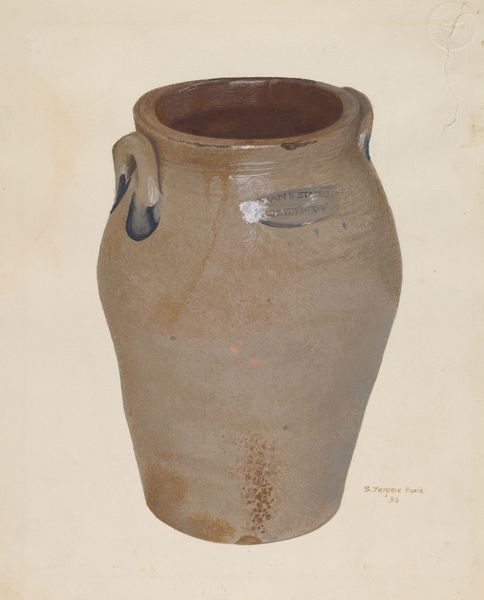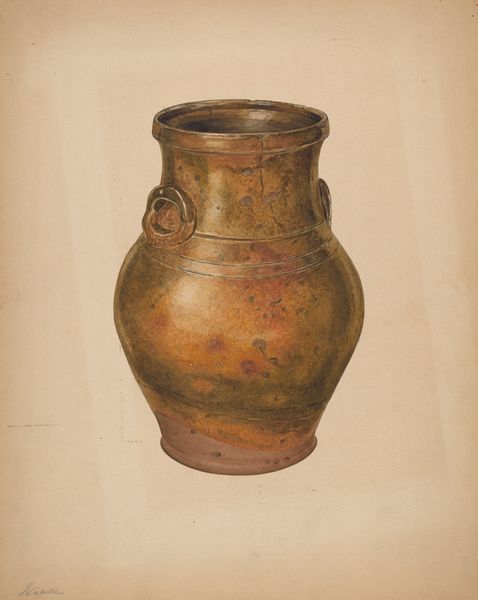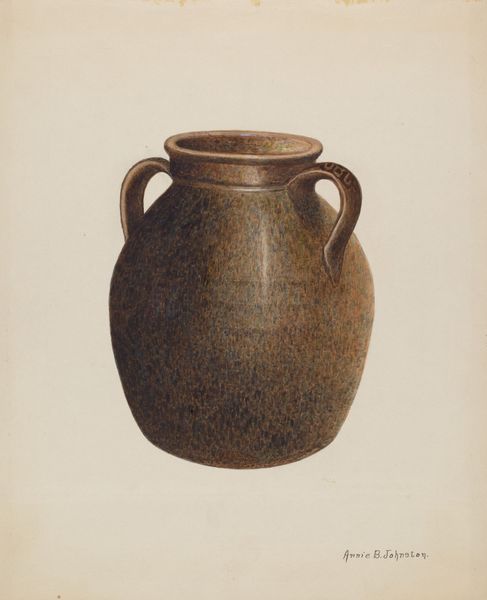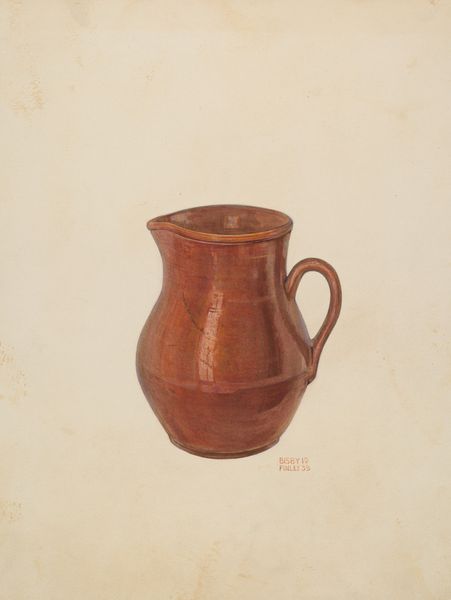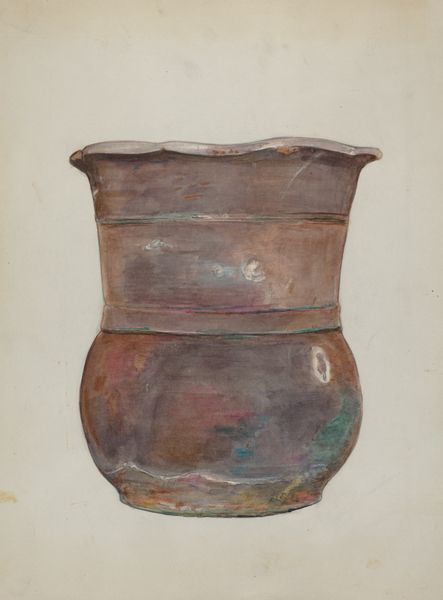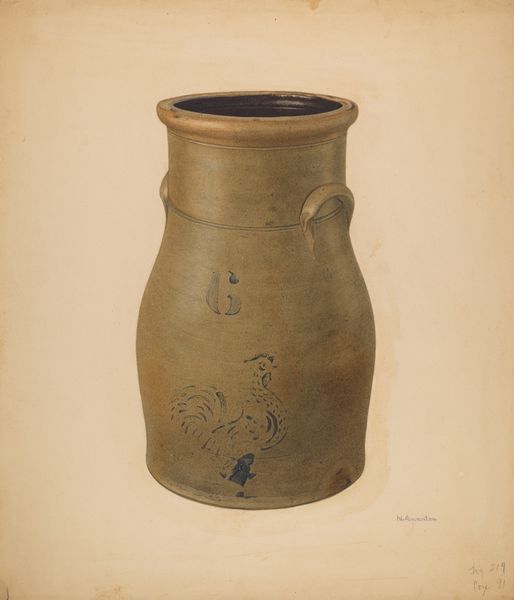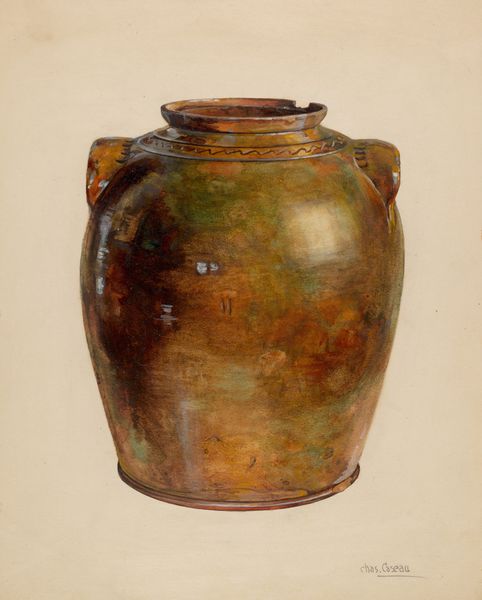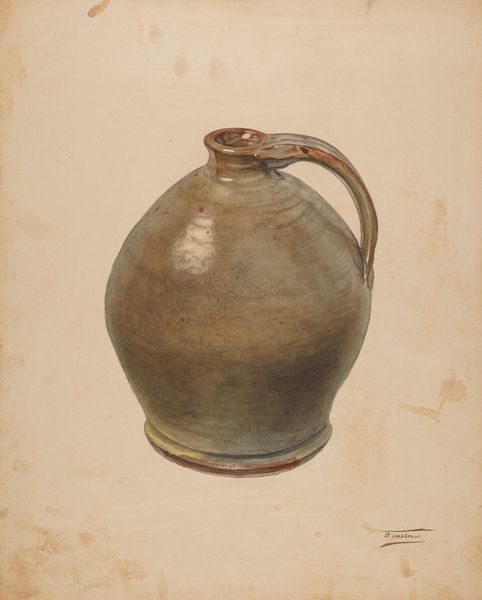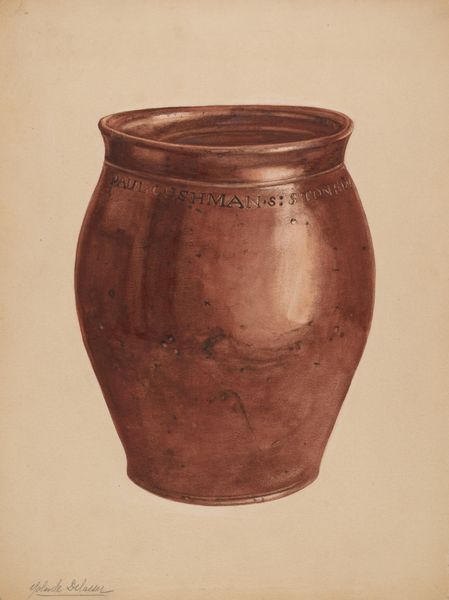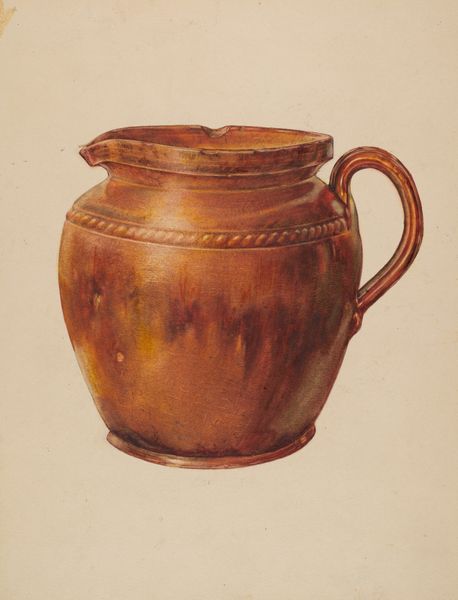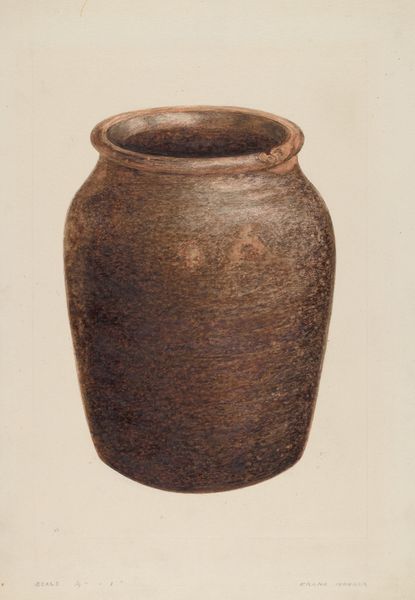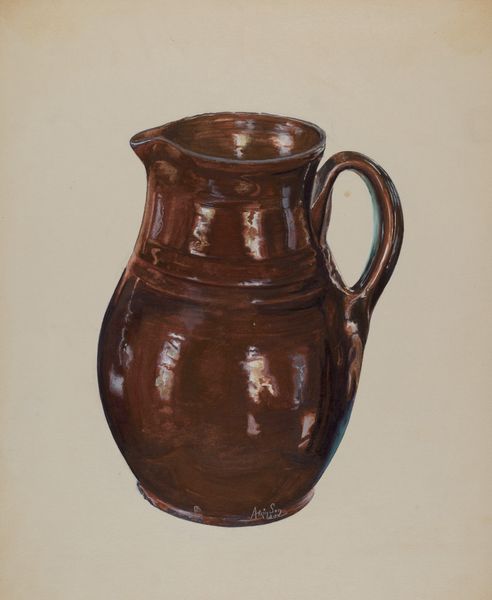
drawing
#
drawing
#
egg art
#
charcoal drawing
#
possibly oil pastel
#
oil painting
#
stoneware
#
underpainting
#
watercolour bleed
#
earthenware
#
watercolour illustration
#
watercolor
Dimensions: overall: 30.5 x 22.8 cm (12 x 9 in.) Original IAD Object: 13 1/2 High 12 Dia(top) 8 1/4 Dia(base)
Copyright: National Gallery of Art: CC0 1.0
Editor: Here we have Bisby Finley's "Pottery Jar," created around 1939. It seems to be a watercolor, capturing a humble, everyday object. It's so simple, yet the texture is quite compelling. What historical context shapes your view of this work? Curator: Seeing this piece through a historical lens, I'm drawn to the representation of the "everyday." The choice of a common pottery jar speaks volumes about the artistic movements of the time. Do you consider what might prompt an artist in 1939 to create art from a household object? Editor: Well, with the Depression still fresh in everyone's minds, maybe finding beauty in simplicity, honoring the tools that sustained them? It does seem… intentional. Curator: Precisely! The rise of Regionalism and American Scene painting emphasized local, accessible subjects. Finley's jar becomes more than just a vessel; it's a symbol of resourcefulness, of home, and perhaps even resistance to the increasing industrialization. Who had access to view a work like this? Editor: Presumably, if this were displayed anywhere, likely middle-class art enthusiasts familiar with the American Scene aesthetic. I see your point about it carrying symbolic weight. Curator: Consider the role of institutions like the WPA’s Federal Art Project at the time. Art became more public, democratized. The “Pottery Jar,” in that context, speaks to the elevation of the ordinary, validated as worthy of artistic attention. Does this change your initial impression? Editor: Definitely. I initially saw it as a straightforward still life. But framed within that historical context, it gains a certain quiet power. Thank you for highlighting the public role art had then. Curator: And for reminding us of art's intrinsic connection to lived experience. I think that’s something we can both appreciate about this piece now.
Comments
No comments
Be the first to comment and join the conversation on the ultimate creative platform.
